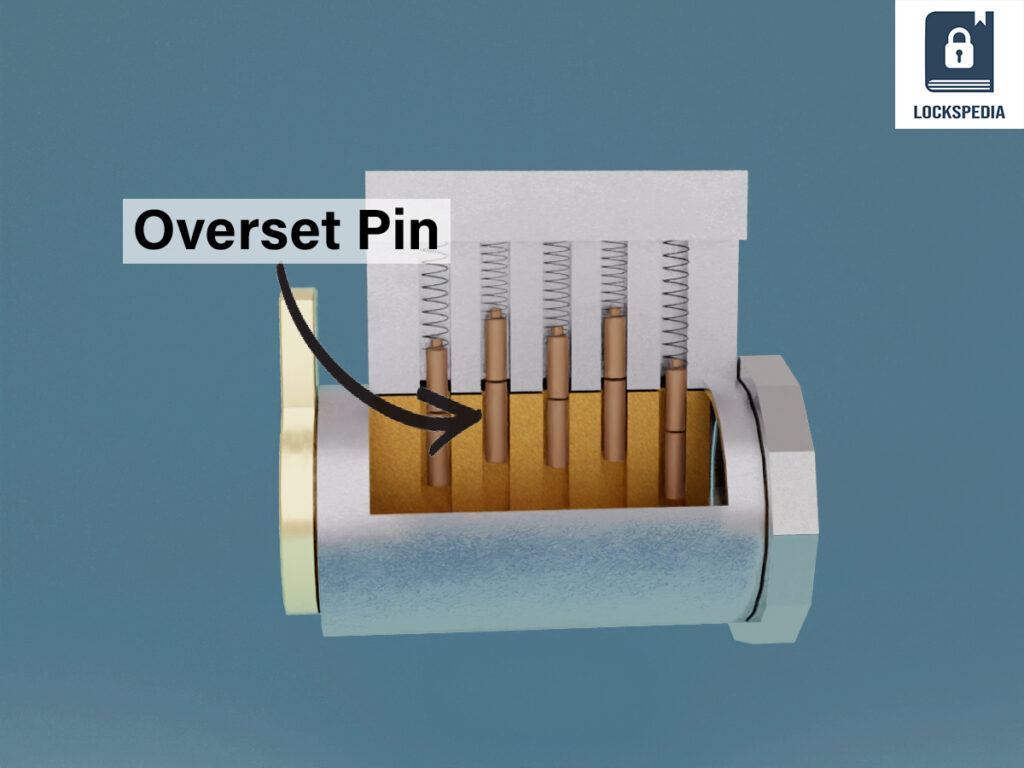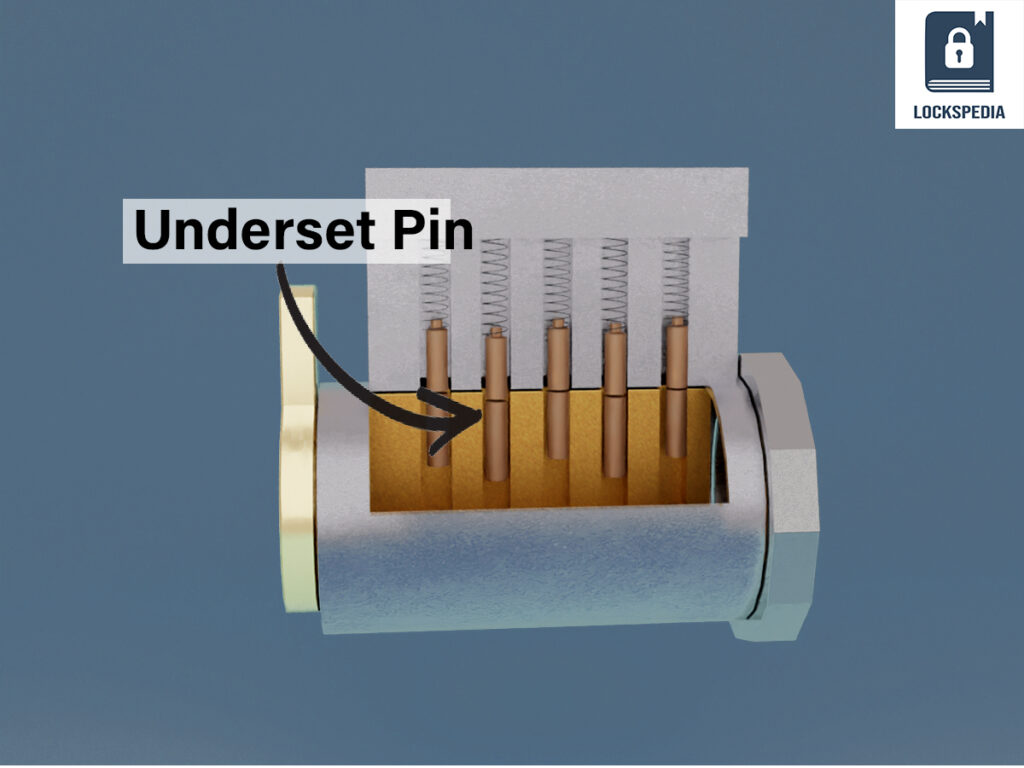In learning how to pick locks, two common obstacles we often encounter are oversetting and undersetting pins. Trust me when I say this, these two monsters have sent me into a tizzy in-numerous times.
Oversetting and undersetting pins occur when a pin is not lifted to the correct height as it should and fool a lock picker into believing that the pin is set when actually it is not.
Now if you are still working with clear padlocks, then you’ll be able to see the pin not being set and can identify and resolve the problem. However, if you’ve moved past that stage, then you can only feel and not actually see the pin.
And since you believe that the pin is already set, you will feel for the next binding pin but since the first pin was not properly set, there wouldn’t be another binding pin. And this absence of binding pin will make you feel frustrated and perhaps angry too!
Now you understand why I called them little monsters! But luckily there are some tell-tale signs of an overset or underset pin and the resolution is also not that difficult.
What is an Overset Pin?
First up is an overset pin.
An overset pin occurs when the key pin crosses the sheer line and becomes the binding pin rather than the driver pin.
As is shown in the image below, the key pin is stuck between the plug and the lock housing thereby becoming the binding pin. Now if the binding force is greater than the spring force, the pin (and you too!) will be stuck in that position.

How to Detect an Overset Pin?
Two things happen when a pin is overset –
- Lack of another binding pin
- Since the key pin is stuck at the sheer line, it will be rigid unlike a true set when it would be loose in the plug.
Therefore, to identify an overset pin, probe each key pin to see if it feels dead i.e. hard to move or no feedback at all. Another way to detect an overset pin is that you will have to lift your lock pick extra high to feel that pin.
If you have noticed, I have not mentioned lack of binding pin as an identification marker for an overset pin. The reason is that it is a common occurrence in an overset as well as an underset pin situation.
Note: Feeling the dead key pin is not that easy and will take time, so don’t lose patience. If lock picking was so easy, then everyone would be a lockpicker.
How to Fix an Overset Pin?
Fixing an overset pin involves loosening the tension a bit and tapping the overset pin with your pick so that is falls back into the plug.
Now these are only words but what mastering how much tension to release will only come with practice.
When you release the tension, the overset pin might totally drop back into the plug bringing it to the rest state or the pin might actually get set.
How to Prevent Oversetting a Pin?
An overset pin situation occurs when too much force is applied on the binding pin lifting the key pin above the sheer line.
To prevent an overset pin situation, lift the binding pin gently until you hear a click sound which shows that the pin is truly set.
Remember lock picking is an art of finesse and gentle touch and should be practiced likewise.
What is an Undersetting Pin?
An underset pin occurs when the driver pin is not lifted high enough to reach the shear line and is sitting somewhere between the set state and the rest position.
In an underset pin situation, the key pin will not be under any spring action and will fall back into the plug just like a true set state. However, the driver pin will still be binding. The lock picker, believing that the previous pin is already set, will go for finding the next binding pin. Needless to say, he/she will find none leading to him to a state of frustration.
The image below shows how an underset pin looks like –

How to Detect an Underset Pin?
The first step to identify an underset pin is the lack of another binding pin. Next step is to feel each key pin to see if it provides an spring feedback.
How to Fix an Underset Pin?
Once you’ve identified an underset pin, without changing the tension, gently apply upward force with your lock pick till the pin is actually set and you hear a click sound.
It might be possible that you may not succeed at first. In such cases, instead of getting frustrated, release the tension fully so that the entire pin stack comes back to the normal rest state. And then you can start afresh.
How to Prevent Undersetting a Pin?
Undersetting pins occur when enough force is not applied to lift the driver pin above the sheer line.
The best way to prevent undersetting a pin is to apply proper lift force to the driver pin and looking out for the signs of true set state like click sound and loose key pin.
Summing Up
Oversetting and undersetting pins can throw a lock picker off the learning track. Therefore, it is important to understand them and then make them your allies.
This friendship can only be forged with practice. Therefore, practice, practice and practice. Get yourself a bunch of clear padlocks and create a false set situation. See how the pins and the lock behave in a false set situation. And then practice to fix them.
Frequently Asked Questions
What is the proper technique for setting pins in a lock without oversetting?
When setting pins in a lock, we use light tension and gently probe each pin with a pick, lifting only until we feel a slight give or click that indicates a pin is set. Oversetting happens when a pin is pushed too high, which can be avoided with careful, calibrated movements.
